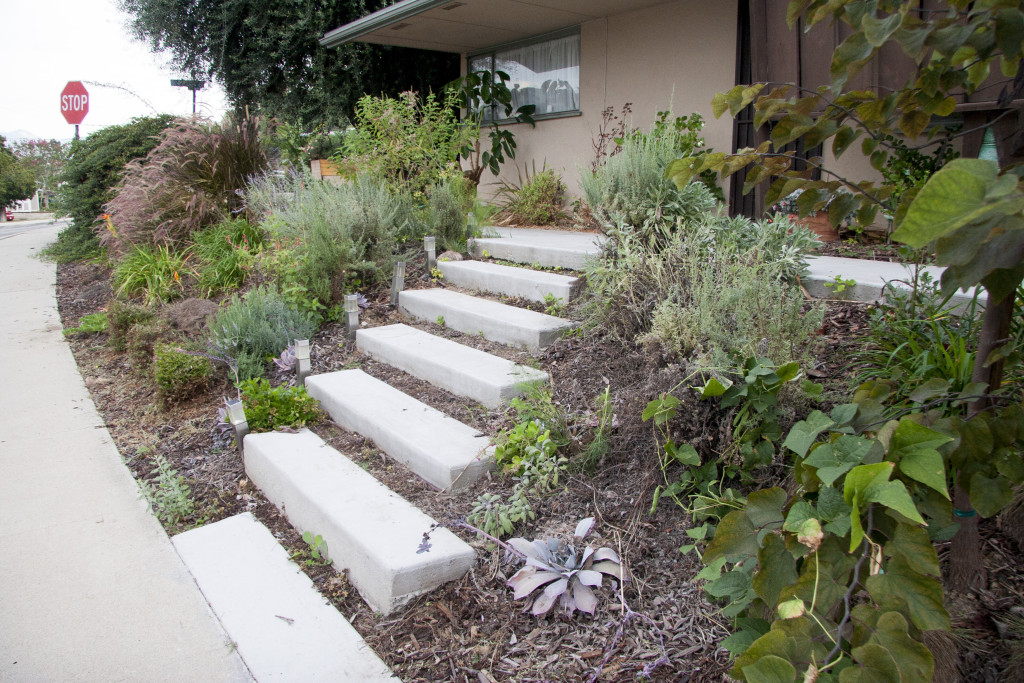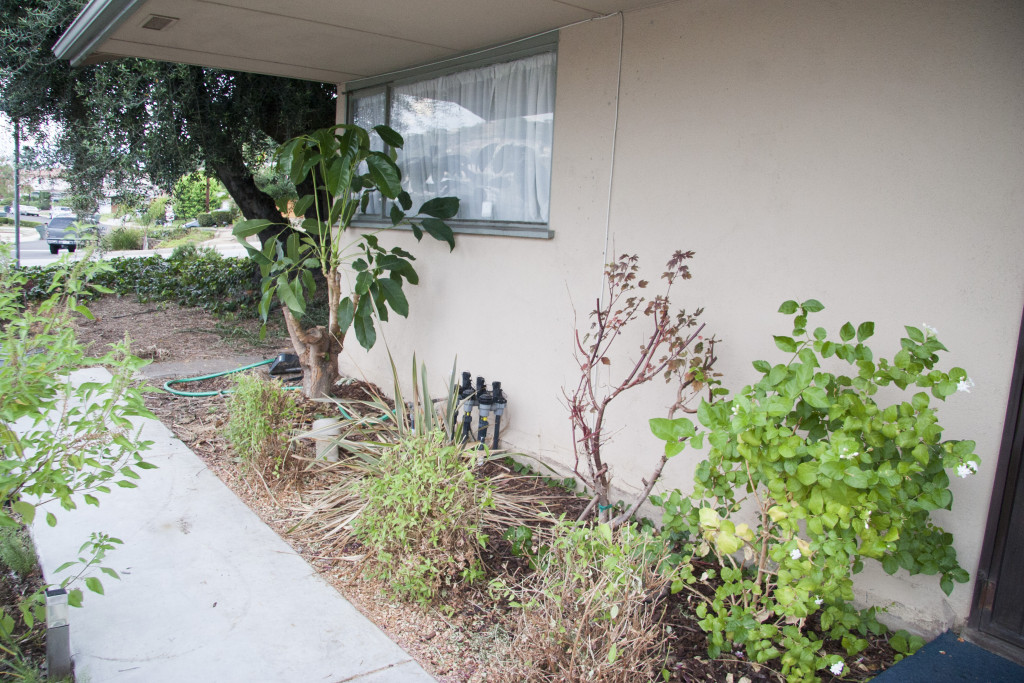Garden waste not, want not
On Sunday, I was able make a dent on maintaining and preparing the Front Garden for fall. My brother, John, was able to help as well. While there was enough man power to accomplish the task, the blistering sun said otherwise. Despite the shorten work day we managed to collect quite a pile of green waste among other things.
advertisement
 Garden and yard waste is often not wasted. There is almost always a good use for it. Rather than call it “waste,” I prefer to call it “potential.” With this sizable pile of garden potential, it will be mulched down and composted. In terms of permaculture, we are taking a little bit of elbow grease and gasoline (to run the mower) to create our own compost. With these resources, we are saving the fuel it would have required; and the landfill space it would have taken to haul away and hold two 70 gallon sized bins worth of yard waste. Furthermore, by making one’s own compost we are saving on the resources it would have otherwise required to bring the compost to the garden. More importantly of all, by retaining the garden potential, we are returning the minerals that are often locked in the leaves, branches, flowers, thorns, etc back to our soil.
Garden and yard waste is often not wasted. There is almost always a good use for it. Rather than call it “waste,” I prefer to call it “potential.” With this sizable pile of garden potential, it will be mulched down and composted. In terms of permaculture, we are taking a little bit of elbow grease and gasoline (to run the mower) to create our own compost. With these resources, we are saving the fuel it would have required; and the landfill space it would have taken to haul away and hold two 70 gallon sized bins worth of yard waste. Furthermore, by making one’s own compost we are saving on the resources it would have otherwise required to bring the compost to the garden. More importantly of all, by retaining the garden potential, we are returning the minerals that are often locked in the leaves, branches, flowers, thorns, etc back to our soil.
advertisement
The above pile is comprised of: purple fountain grass, daylily, cranberry hibiscus, apple mint, Spanish lavender, rosemary, yarrow, Russian sage, Mexican Heather, fennel, pink abelia, and umbrella tree. After all of this garden potential is collected, the Front Garden looks a tad rougher around the edges. There is still more to do as far as clearing foliage out to expose more soil for fall planting. In the meantime, this is how the Front Garden is looking:
 The Mexican Heather (aka False Heather) along the sidewalk have been cut back to the main branches. Mexican Heather is a quick growing shrub that attracts many bees. The green tuft at the base of the ‘Forest Pansy’ redbud tree is yarrow. It too is a fast growing and spreading plant. In the middle foreground is a Tartan dahlia that slouched over some ‘King Richard’ leeks.
The Mexican Heather (aka False Heather) along the sidewalk have been cut back to the main branches. Mexican Heather is a quick growing shrub that attracts many bees. The green tuft at the base of the ‘Forest Pansy’ redbud tree is yarrow. It too is a fast growing and spreading plant. In the middle foreground is a Tartan dahlia that slouched over some ‘King Richard’ leeks.
 On the right of the steps: the Spanish lavender, culinary sage, and fennel overtook the space and smothered the ‘After glow’ echeveria. They have since been cut back to reveal one surviving echeveria and some purple sage hanging on for dear life. On a side note, I will be keeping my eye out for a new spot for the echeveria.
On the right of the steps: the Spanish lavender, culinary sage, and fennel overtook the space and smothered the ‘After glow’ echeveria. They have since been cut back to reveal one surviving echeveria and some purple sage hanging on for dear life. On a side note, I will be keeping my eye out for a new spot for the echeveria.
 On the left side of the steps: the same culprit (Spanish lavender) along with pineapple sage and rosemary played the same tune. They overtook the space and have been drastically cut back. Can you spot the ‘Provence’ lavender and thyme? (They are sandwiched between the pineapple sage and Mexican Heather.) How about the celery that is sandwiched between the step and the echeveria? That celery was grown from seed, harvested, and brought out here to grow.
On the left side of the steps: the same culprit (Spanish lavender) along with pineapple sage and rosemary played the same tune. They overtook the space and have been drastically cut back. Can you spot the ‘Provence’ lavender and thyme? (They are sandwiched between the pineapple sage and Mexican Heather.) How about the celery that is sandwiched between the step and the echeveria? That celery was grown from seed, harvested, and brought out here to grow.
advertisement
 As I am always looking for dirt to grow plants, I have become focused on this part of the Front Garden. Using permaculture design (which I will detail in future writings), this part of the yard is seeing more use. Starting this year, below ground vegetables like potato and peanut have been planted along the sidewalk with mild results. In the next planting, the dirt will be worked so that it can become soil. Which one hopes will bring better yields. For now, I will continue to wait to see what kind of yield this peanut plant will bring forth. My hypothesis is that it will be closer on the low side. It was only after sowing the seeds that it was found out that the mulch is hindrance. Peanuts begin their formation above ground and need to make their way below. For them, peanuts prefer that their path down is clear of obstructions.
As I am always looking for dirt to grow plants, I have become focused on this part of the Front Garden. Using permaculture design (which I will detail in future writings), this part of the yard is seeing more use. Starting this year, below ground vegetables like potato and peanut have been planted along the sidewalk with mild results. In the next planting, the dirt will be worked so that it can become soil. Which one hopes will bring better yields. For now, I will continue to wait to see what kind of yield this peanut plant will bring forth. My hypothesis is that it will be closer on the low side. It was only after sowing the seeds that it was found out that the mulch is hindrance. Peanuts begin their formation above ground and need to make their way below. For them, peanuts prefer that their path down is clear of obstructions.
 Earlier, I spoke of how hot the day was. There was a very good chance that our judgement was a little impaired when it was decided that this spot needed a trim on that day. In hindsight, it was much too early in the year to trim. The weather is not cool enough and the day is not short enough yet. Especially with the umbrella tree grown in, the plants provide a great deal of shade to the room behind. Normally, when the weather is cooler is when the umbrella tree is cut back. Doing so serves two purposes: it resets the tree’s size and it allows the sun to warm and otherwise colder house. This is another example of working with nature to live comfortably.
Earlier, I spoke of how hot the day was. There was a very good chance that our judgement was a little impaired when it was decided that this spot needed a trim on that day. In hindsight, it was much too early in the year to trim. The weather is not cool enough and the day is not short enough yet. Especially with the umbrella tree grown in, the plants provide a great deal of shade to the room behind. Normally, when the weather is cooler is when the umbrella tree is cut back. Doing so serves two purposes: it resets the tree’s size and it allows the sun to warm and otherwise colder house. This is another example of working with nature to live comfortably.













![#gardentotable #dưamón (Vietnamese dried then refrigerator pickled daikon radish) with my aunt's homemade #banhtet (sweet rice roll with mung bean and fatty pork seasoned with salt & Sichuan pepper*; tightly wrapped with banana leaves and boiled.)
*Teochew variation
Banh Tet is 'Cake of the Spring Festival.' It is made and given as gifts in South Vietnam and where this culture resides. [Photo 4: banh Tet dressed with festival paper.]
It is therefore a common food of the #springfestival. [Photo 3: banh Tet before it is crisped up with some oil on a pan.]
While it is often crisped up and consumed, an accompanying pickle can be used to add another element to this simple comfort food. From our garden we used a volunteer daikon radish and a couple of 'Bolero' carrots. I made this from memory of my dad making it. I cut the daikon into steak fries shape and dehydrated them. For the brine my mom advised. It consists of fish sauce, sugar, and water. The concentrates are dependent on taste and the strength and salinity of the fish sauce.
My dad preferred it on the saltier side; whereas traditional Vietnamese flavor profiles prefer salty and sweet.
[Photo 2: All said and done, reusing a food jar is key to maximum wholesomeness 😉😝😅]
Note: There appears to be two variations of dua mon-- traditional Vietnamese and Teochew. By dehydrating instead of sweating (partially removing water,) the daikon is crunchy and elastic; making it a very classic #teochew texture profile.
See more Spring Festival/Chinese Lunar New Year/#Tet posts at: #ned_springfestival](https://scontent-bos5-1.cdninstagram.com/v/t51.29350-15/427935298_939543330529922_6652804083994273886_n.heic?stp=dst-jpg_tt6&_nc_cat=105&ccb=1-7&_nc_sid=18de74&_nc_ohc=vkEDByqoZx0Q7kNvgHmpPVO&_nc_zt=23&_nc_ht=scontent-bos5-1.cdninstagram.com&edm=ANo9K5cEAAAA&_nc_gid=AQ0O70jJaui1vEB9PUvt3AX&oh=00_AYBk3qRj1cCMa6BqfnEwNod7NHlW62OWfOkbJHhY2vTRcw&oe=675657AE)


 . The ghostly photo was create
. The ghostly photo was create


